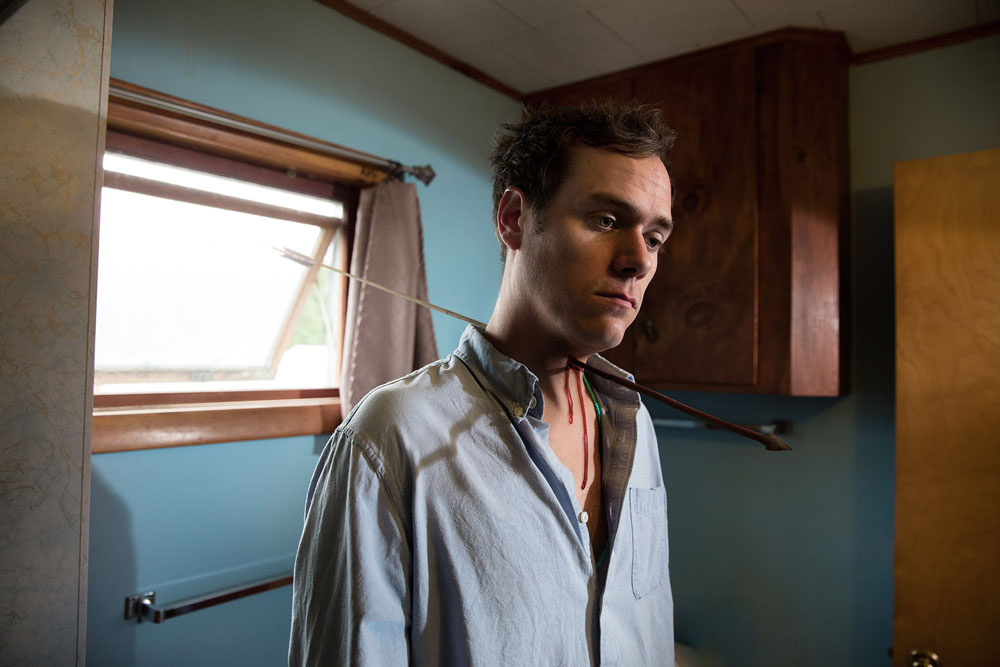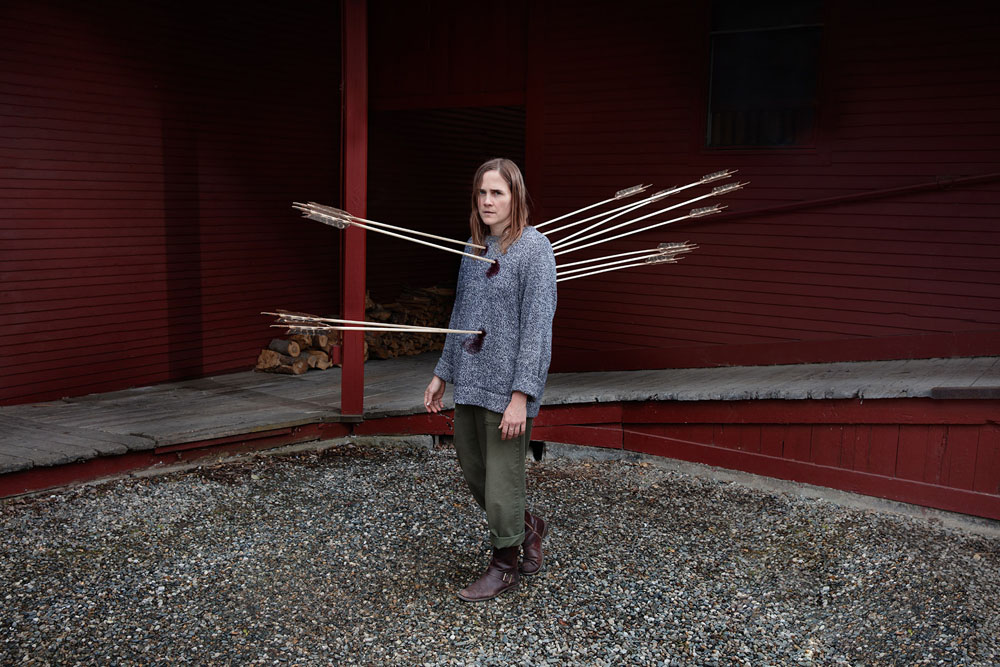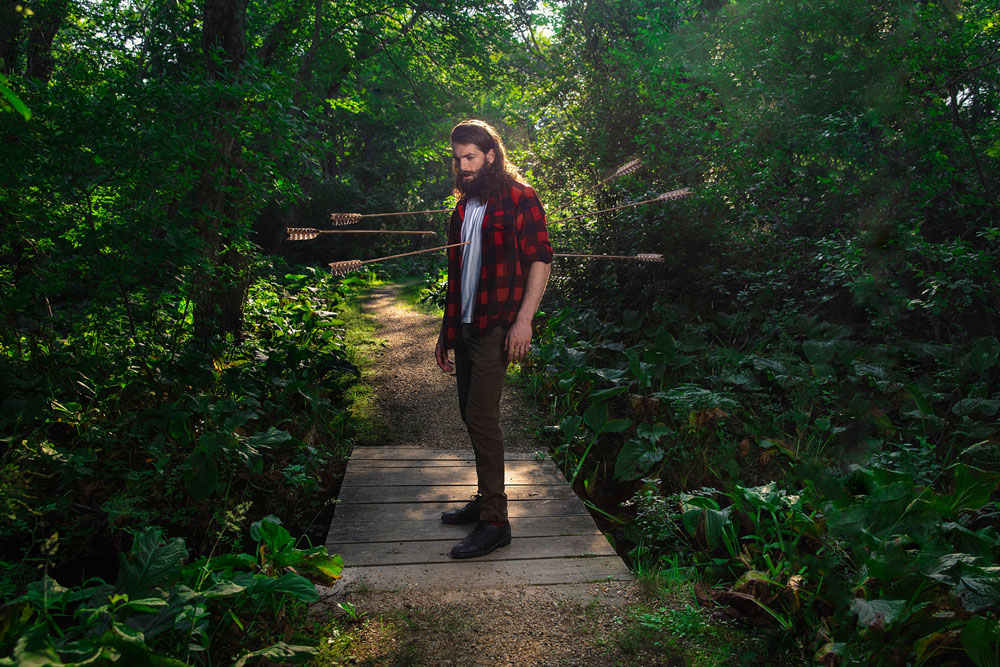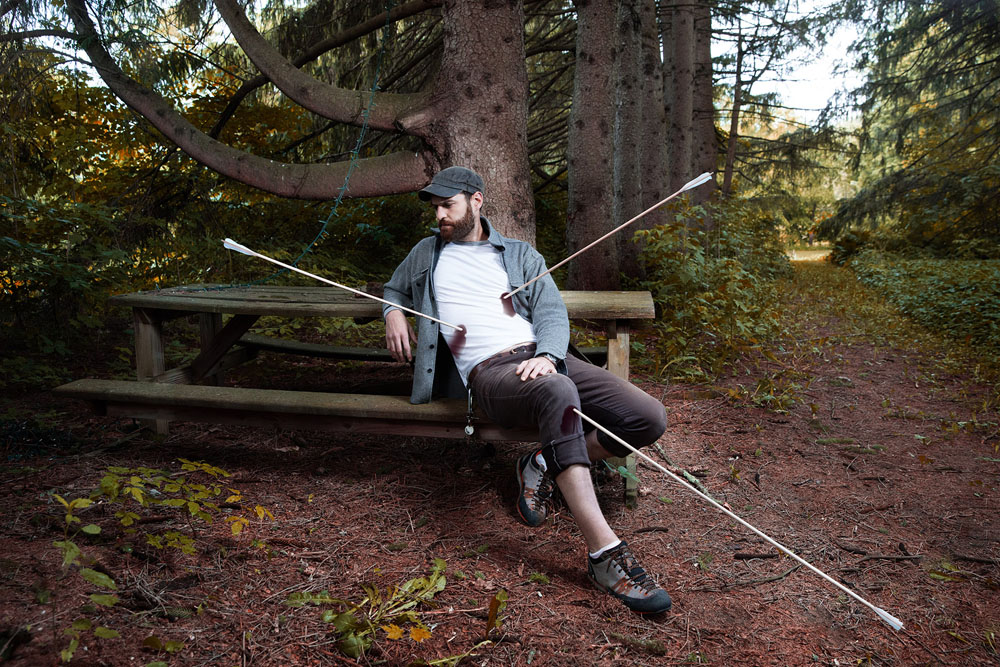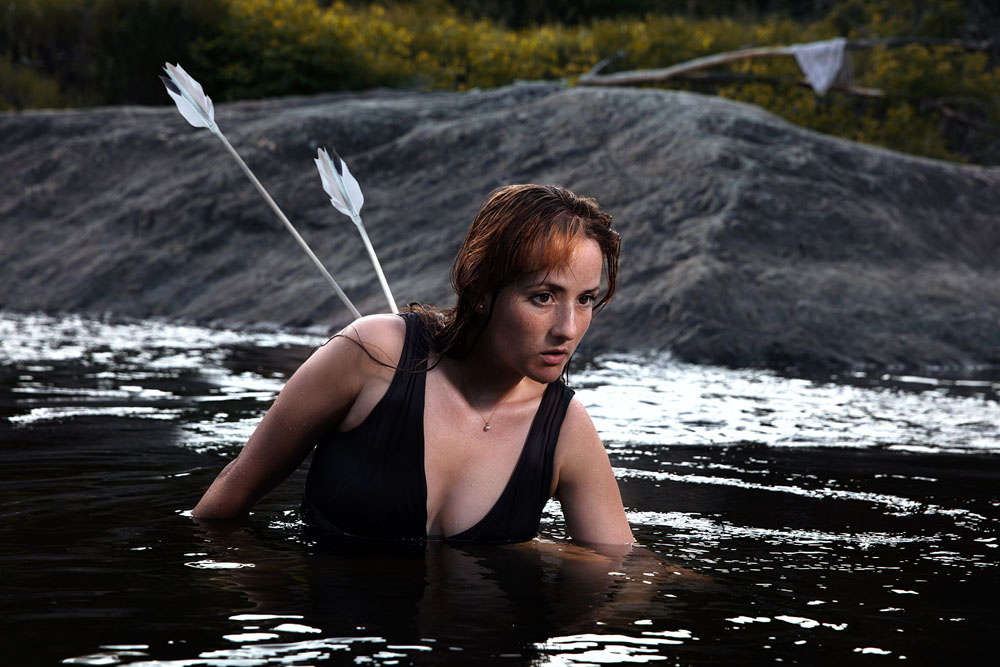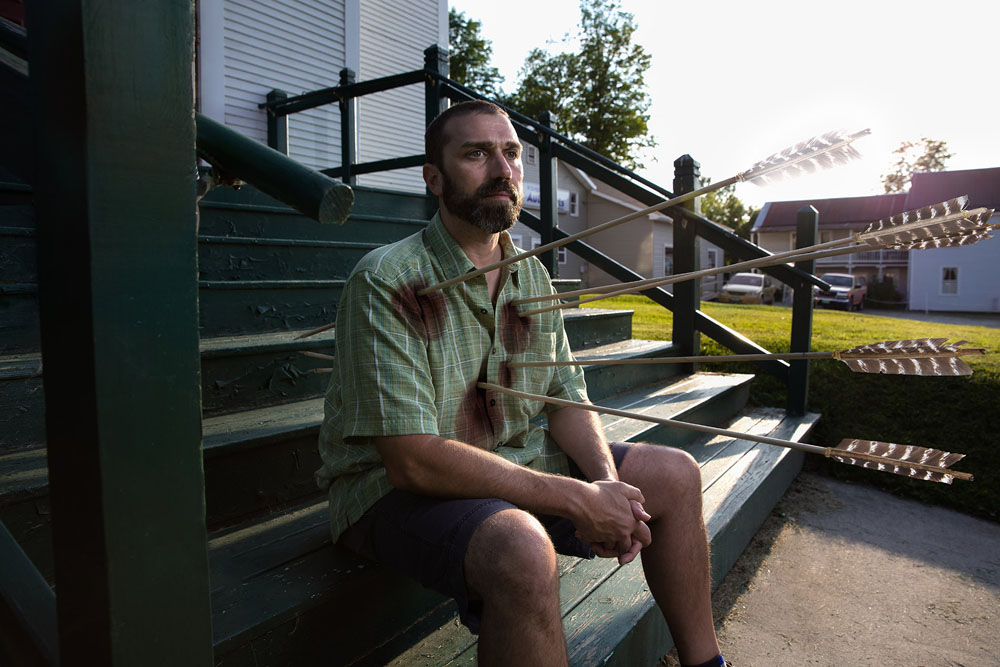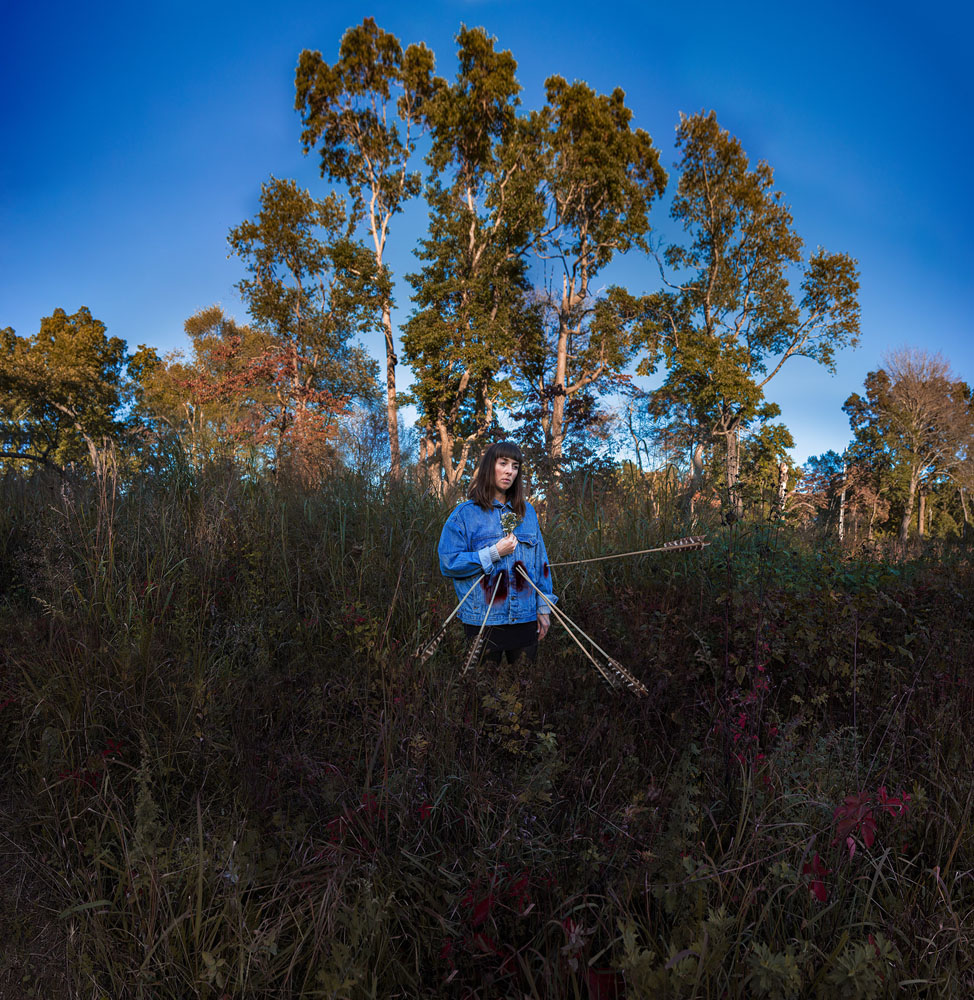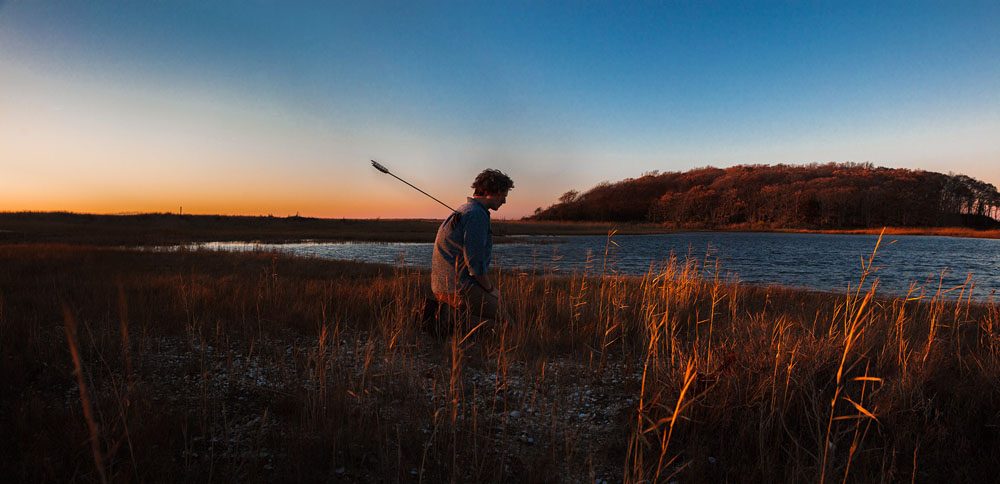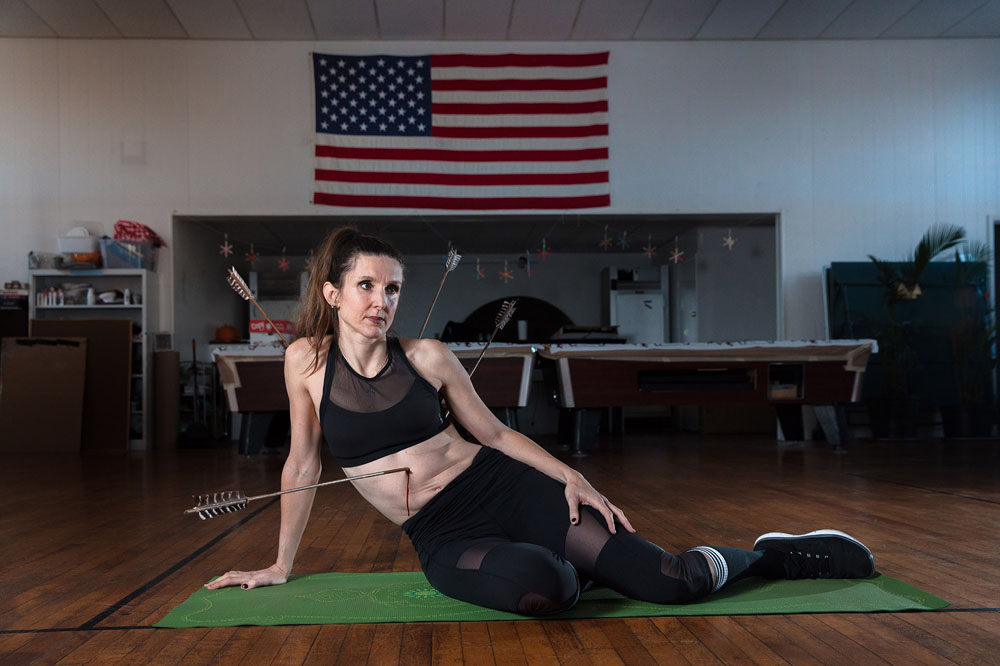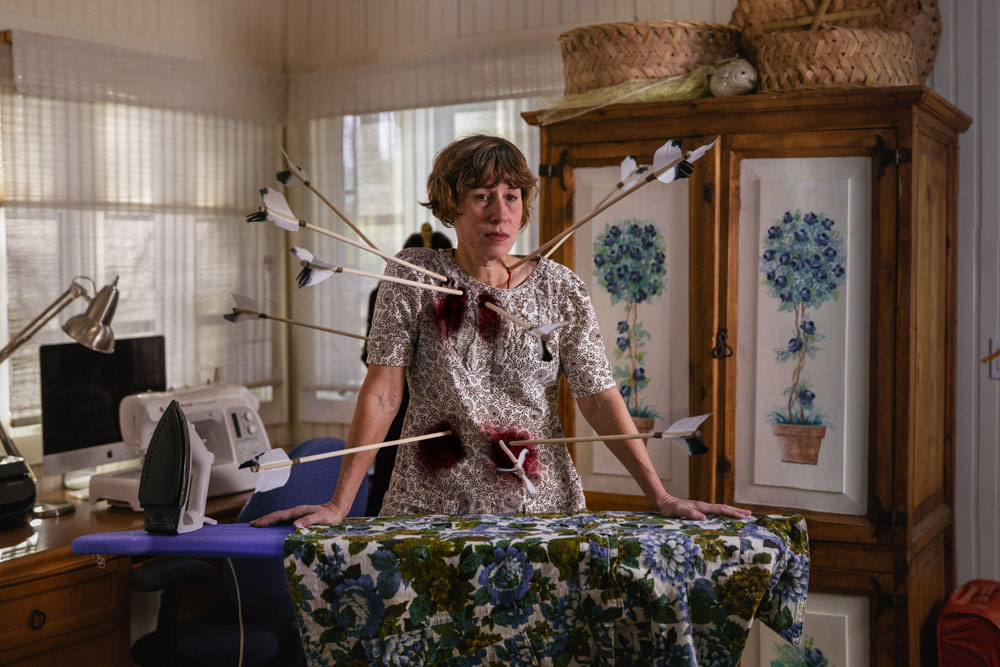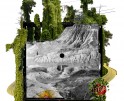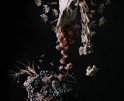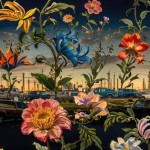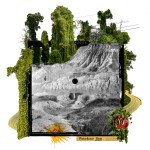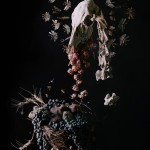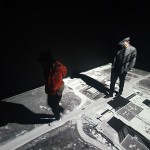Spirit: Focus on Indigenous Art, Artists, and Issues: Jeremy Dennis
This week we partner with the National Center for Civil and Human Rights to share the work of Indigenous Artists. As written by our curator, Donna Garcia: “this initiative should educate the public, through lens-based art, regarding the true history of indigenous people and recruit allies/advocates for indigenous issues everywhere, but with a specific focus on the US and Canada, where native lands and people аre still coming under attack everyday.”
Jeremy Dennis‘ project Nothing Happened Here illustrates the shared trauma of living on indigenous lands without rectification. Reflecting upon his experiences and observations in his community on the Shinnecock Reservation in Southampton, New York, Dennis illustrates the burden of loss of culture through assimilation, omission of Native history, loss of land, and resulting economic disadvantage.
Dennis’s photography often explores indigenous identity, cultural assimilation and the ancestral traditional practices of his tribe, the Shinnecock Indian Nation. This photo series explores the violence/non-violence of post-colonial Native American psychology. Though science has solved many questions about natural phenomena, questions of identity are more abstract, the answers more nuanced. His work is a means of examining his personal identity and the identity of his community, specifically the unique experience of living on a sovereign Indian reservation and the problems that are faced.
In Nothing Happened Here, the artist captures surreal, almost cinematic production in the stillness of one picture. Through the use of digital photography, these images have a haunted urgency and profound dislocation from their landscape, which is uncomfortable yet familiar. The arrows in each image act as a symbol of an everlasting indigenous presence in each scene. Dennis’s decision to place non-natives subjects in these tableaux creates a tension that forces the viewer to consider the idea that there is a shared burden and poses the question, how do we overcome our troubled past?
As more truth about the early contact-period between colonists and indigenous groups, comes to light, it is difficult not to link the current dilemma of power, gained or lost, with that disturbing history.
By looking to the past, Dennis traces issues that plague indigenous people back to their source. For example, centuries of treaties, land grabs and colonialist efforts to whitewash indigenous communities have led to the ways that indigenous communities interact with their environments today, and the constant struggle to maintain autonomy over culture, identity and place.
Nothing Happened Here is a nuanced interpretation around the reality of the “white guilt” that many Americans have carried through generations, and the inconvenience of co-existing with people their ancestors tried to destroy. These stylized portraits of non-indigenous people impaled by arrows focuses on the most dramatic emotions and complex moments of silence and thought for the subject around these issues. With racial divisions and pressures reaching a nationwide fever pitch, it is more important than ever, according to Dennis, to offer accurate and compelling representation of indigenous people.
“I like making use of the cinema’s tools, the same tools that movie directors have always turned against us (curiously familiar representations, clothing that makes a statement, pleasing lighting), to create conversations about uncomfortable aspects of post-colonialism.”
Jeremy Dennis’s lens-based work strives to preserve the indigenous mythology that influences it; these stories grant him access to the minds of his ancestors, including the value they placed on sacred lands that, despite four hundred years of colonization, they remain anchored through the tradition of storytelling.
When asked about assuming this role as storyteller Dennis says, “Our ancient stories showcase the sanctity of our land, elevating its worth beyond a prize for the highest bidder.”
Jeremy is in support of https://www.mashouse.studio/ and https://www.gofundme.com/f/mas-house-studio
Nothing Happened Here
2016 – 2017
Nothing Happened Here is a photo series that explores the violence/non-violence of post-colonial Native American psychology.
Reflecting upon my own experience and observations in my community, the Shinnecock Reservation in Southampton, New York, specifically the burden of the loss of culture through assimilation, omission of our history in school curriculum, and loss of land and economic disadvantage; this series illustrates the shared damaged enthusiasm of living on indigenous lands without rectification.
The arrows in each image act as a symbol of everlasting indigenous presence in each scene. The images may be as compelling if the subjects were of indigenous descent, but the decision to use non-native subjects reveals a shared burden. The question remains of how to overcome this troubled past. As we learn of early contact-period history between colonists and indigenous groups, that history sticks with us, and it is difficult not to link current predicament of power, gained or lost, with that important past.
Jeremy Dennis (b. 1990) is a contemporary fine art photographer and a tribal member of the Shinnecock Indian Nation in Southampton, NY. In his work, he explores indigenous identity, culture, and assimilation.
Dennis was one of 10 recipients of a 2016 Dreamstarter Grant from the national non-profit organization Running Strong for American Indian Youth. He was awarded $10,000 to pursue his project, On This Site, which uses photography and an interactive online map to showcase culturally significant Native American sites on Long Island, a topic of special meaning for Dennis, who was raised on the Shinnecock Nation Reservation. He also created a book and exhibition from this project. Most recently, Dennis received the Creative Bursar Award from Getty Images in 2018 to continue his series Stories.
In 2013, Dennis began working on the series, Stories—Indigenous Oral Stories, Dreams and Myths. Inspired by North American indigenous stories, the artist staged supernatural images that transform these myths and legends to depictions of an actual experience in a photograph.
Residencies: Yaddo (2019), Byrdcliffe Artist Colony (2017), North Mountain Residency, Shanghai, WV (2018), MDOC Storytellers’ Institute, Saratoga Springs, NY (2018). Eyes on Main Street Residency & Festival, Wilson, NC (2018), Watermill Center, Watermill, NY (2017) and the Vermont Studio Center hosted by the Harpo Foundation (2016).
He has been part of several group and solo exhibitions, including Stories—Dreams, Myths, and Experiences, for The Parrish Art Museum’s Road Show (2018), Stories, From Where We Came, The Department of Art Gallery, Stony Brook University (2018); Trees Also Speak, Amelie A. Wallace Gallery, SUNY College at Old Westbury, NY (2018); Nothing Happened Here, Flecker Gallery at Suffolk County Community College, Selden, NY (2018); On This Site: Indigenous People of Suffolk County, Suffolk County Historical Society, Riverhead, NY (2017); Pauppukkeewis, Zoller Gallery, State College, PA (2016); and Dreams, Tabler Gallery, Stony Brook, NY (2012).
Dennis holds an MFA from Pennsylvania State University, State College, PA, and a BA in Studio Art from Stony Brook University, NY. He currently lives and works in Southampton, New York on the Shinnecock Indian Reservation.
Instagram: @jeremynative
My photography explores indigenous identity, cultural assimilation, and the ancestral traditional practices of my tribe, the Shinnecock Indian Nation. Though science has solved many questions about natural phenomena, questions of identity are more abstract, the answers more nuanced. My work is a means of examining my identity and the identity of my community, specifically the unique experience of living on a sovereign Indian reservation and the problems we face.
Digital photography lets me create cinematic images. Nowhere have indigenous people been more poorly misrepresented than in American movies. My images question and disrupt the post-colonial narrative that dominates in film and media and results in damaging stereotypes, such as the “noble savage” depictions in Disney’s Pocahontas. As racial divisions and tensions reach a nationwide fever pitch, it’s more important to me than ever to offer a complex and compelling representation of indigenous people. I like making use of the cinema’s tools, the same ones directors have always turned against us (curiously familiar representations, clothing that makes a statement, pleasing lighting), to create conversations about uncomfortable aspects of post-colonialism. For example, in my 2016 project, “Nothing Happened Here,” stylized portraits of non-indigenous people impaled by arrows symbolize, in a playful way, the “white guilt” many Americans have carried through generations, and the inconvenience of co-existing with people their ancestors tried to destroy.
By looking to the past, I trace issues that plague indigenous communities back to their source. For example, research for my ongoing project “On This Site” entailed studying archaeological and anthropological records, oral stories, and newspaper archives. The resulting landscape photography honors Shinnecock’s 10,000-plus years’ presence in Long Island, New York. Working on that collection has left me with a better understanding of how centuries of treaties, land grabs, and colonialist efforts to white-wash indigenous communities have led to our resilience, our ways of interacting with our environment, and the constant struggle to maintain our autonomy.
Despite four hundred years of colonization, we remain anchored to our land by our ancient stories. The indigenous mythology that influences my photography grants me access to the minds of my ancestors, including the value they placed on our sacred lands. By outfitting and arranging models to depict those myths, I strive to continue my ancestors’ tradition of storytelling and showcase the sanctity of our land, elevating its worth beyond a prize for the highest bidder.
CURRENT PROJECTS
I am currently working on restoring an old family home on the Shinnecock Indian Reservation which will become a communal space and my visual art studio. More information can be found here: https://www.gofundme.com/manage/artist-house-fund
About the Editor:
Donna Garcia’s work illustrate a semiotic dislocation that has been organically reconstructed in a way that gives her subjects a voice in the present moment; something they didn’t have in the past. Her images rise above what they actually are and become empathetic recreations in a fine art narrative. She has an MFA in Photography from Savannah College of Art and Design and her work has been exhibited internationally. She is a 2019 nominee of reGENERATION 4: The Challenges of Photography and the Museum of Tomorrow. Musee de l’Elysee, Lausanne, Switzerland. Emerging Artists to Watch, Fine Art Photography, Nomination (only 250 lens-based emerging artists nominated worldwide).
About the National Center for Civil and Human Rights:
The National Center for Civil and Human Rights is a cultural institution and advocacy organization located in downtown Atlanta, Georgia. Powerful and immersive exhibits tell the story of the American Civil Rights Movement and connect this history to modern struggles for human rights around the world. The National Center for Civil and Human Rights has the distinction of being one of the only places to permanently display the papers and artifacts of Dr. Martin Luther King, Jr. Events, educational programs, and campaign initiatives bring together communities and prominent thought leaders on rights issues. For more information, visit civilandhumanrights.org and equaldignity.org. Also sign up for Campaign for Equal Dignity!
Join the conversation on @ctr4chr (Twitter), @ctr4chr (Facebook), and @ctr4chr (Instagram).
Posts on Lenscratch may not be reproduced without the permission of the Lenscratch staff and the photographer.
Recommended
-
Earth Week: Aaron Huey: Wallpaper for the End of the WorldApril 26th, 2024
-
Earth Week: Casey Lance Brown: KudzillaApril 25th, 2024
-
Tara Sellios: Ask Now the BeastsApril 6th, 2024
-
ALEXIS MARTINO: The Collapsing Panorama April 4th, 2024
-
Emilio Rojas: On Gloria Anzaldúa’s Borderlands: The New MestizaMarch 30th, 2024

